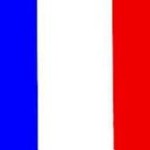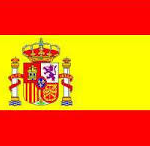…. A wonderful surprise in the “ Trinacria’s” hearth:
“ Oppidum Sarracenorum”, “Civitas Costantissima”, “ State Town”, “ 24 Barons’ Town” that is… Nicosia!
As an ancient and elegant lady, sits on the 4 hills which give her a sinuous and attractive course, rich in history, architecture and culture.
Surely, Nicosia, “ The S. Nicolò Town”, born before the year 1000 from the illustrious source ( Erbita, Engio or Imacara ), is a town of Byzantine origin. Absorbed among the snows and the woods of the “ Madonie” and “ Nebrodi”, creeps a wonderful hilly area – where you can breathe a fresh and sparkling air- an area that adorned with beech trees, oaks, holm oaks, ponds and populated by rapacious, woodpeckers, small mammals, sheep and cattle, fascinated the Arabs ( “Oppidum Sarracenorum”), the Norman Count “Ruggero D’ Altavilla” and the great Swabian Emperor “Federico II”.
Ruggero repopulated Nicosia with the Lombard people which gave the town a peculiar “gallo-italico” dialect, still spoken by adults.
Federico II gave her the “Civitas Costantissima” title, enriching her of culture and medieval art.
Nicosia was a “State Town” since the XII century owning numerous feuds and increasing its inestimable architectural and artistic heritage which, through the Renaissance and the Baroque era, comes up to the XIX century with the refined aristocratic palaces of the “ 24 Barons’ Town”.
The “Cathedral” preserves a precious and unique wooden roof of 1300 ( newly restored ), a wonderful example of the Sicilian figurative subjects somewhat different polychrome.
Gagini and his school, in the XVI century,have enriched the artistic heritage with the marble works as the magnificent “cona”( altarpiece), a polyptych high around 10 m. with scenes finely craved representing the Our Lady’s life, located in the “S. Maria Maggiore’s Basilica”.
Two crucifixes, that is “ Padre della Misericordia” in papier-mâché and “ Padre della Provvidenza” in wooden, represented and symbolized rivalries between districts and , at the same time, a great and sincere popular faith.
An explosion of beautiful frescoes by the Flemish Guglielmo Borremans, by the “nicosiani” Filippo Randazzo and Pietro Rovelli, embellish the churches.
The Emperor Carlo V visit, in the 1535, is testified by the wooden throne preserved in the “ S. Maria Maggiore’s Basilica”.
An inimitable coffered wooden ceiling makes the “ S. Calogero’s Church” an art’s casket.
Among the many works in wood stand out : in the Cathedral, the “ Li Volsi choir” where you can admire the representation of Nicosia’s landscape, the “ S. Nicolò and the Quattrocchi statues”; in the “ Frati Minori Cappuccini convent” , the precious and delicate tabernacle, a “case” of nacre.
A “Cappucino” was the mild “Fra Felice da Nicosia”, canonised by Benedetto XVI Pope on 23 October 2005 and appointed town’s “copatrono”.
In the town’s hearth surprises the sober and elegant “ Garibaldi Square”, a quadrangle of fine architecture with the “ Cathedral”, which offers the superb three-storey bell tower and the elegant portico, the “ municipal palace” and the aristocratic halls which almost embrace the central fountain.
It’s interesting to wander through the narrow street adorned with charming views and reach the highest points of four hills and turn the glance on the hot roof’s “coppi”, graze the ancient bell towers and fly on the wide and relaxing landscape to savour ancient emotions.
Meanwhile, in the lane’s maze, smells of the good bread, wild rabbit sauce that colours the fresh pasta, the meat’s roast, the “cannoli” of mountain “ricotta” and the excellent “nocattoli” and “ bracialeti”, try, enchant and……satisfy!
Traduzione a cura di Giuseppe Mammano ( tirocinio Ottobre 2012 )



